One person’s junk is another person’s art: A fun, quirky stop along the Turquoise Trail (Hwy 14) between the East Mountains of Albuquerque and Santa Fe, New Mexico
I’ve driven through Golden, New Mexico at least 50 times. After all, this tiny town of 14 people is only 25-minutes from my house on a scenic back road to Santa Fe known as the Turquoise Trail (Hwy 14). It’s a 38-minute drive to Golden if you’re driving from downtown Albuquerque.
There doesn’t appear to be much to see Golden, but there’s one building that usually catches the eye of drivers as they pass through the town limits. It’s a house with a “free information” sign and lots of eye-catching junk / art, depending on your perspective. One day, I finally decided to stop at “that house” to see what it’s all about, learn about the town of Golden, and hopefully meet the person who lived there. Here’s what I learned.
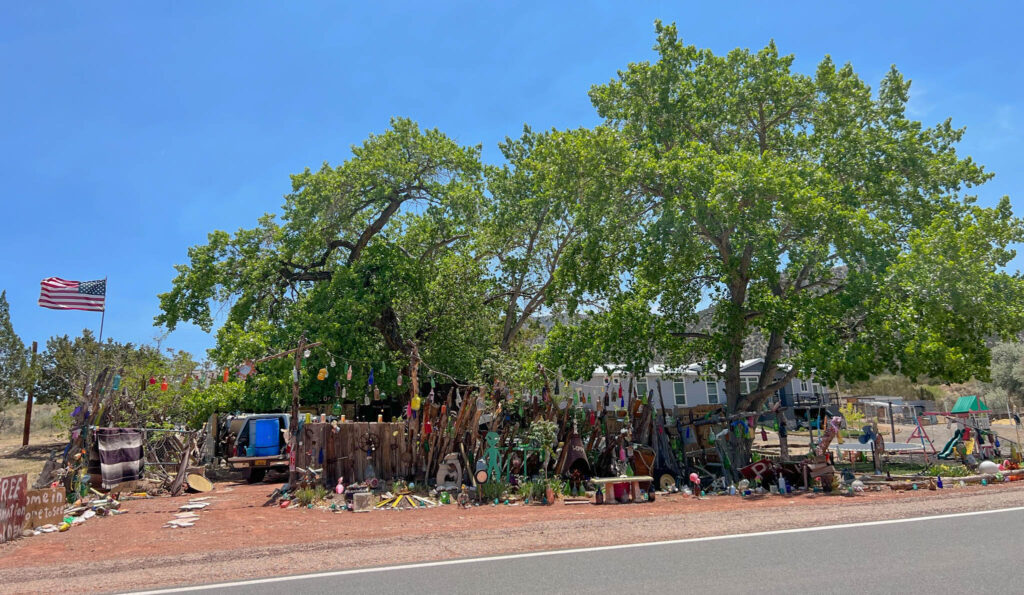
Table of Contents
A Brief History of Golden, New Mexico
First a bit about Golden. Golden used to be home to Native Americans and Spaniards until around 1825. That’s when gold was first discovered at Tuerto Creek on the southwest side of the Ortiz Mountains. This triggered the first gold rush west of the Mississippi River, well before the California Gold Rush (1848) and Colorado Gold Rush (1858). A few small mining camps were initially formed with a few hundred people living in adobe houses.
The area was pretty low-key for about twenty years. Then, around 1880, several large mining companies moved in. The name of one of the mining towns, Real de San Francisco, was changed to Golden, reflecting high hopes of gold deposits to be found and riches to be made.
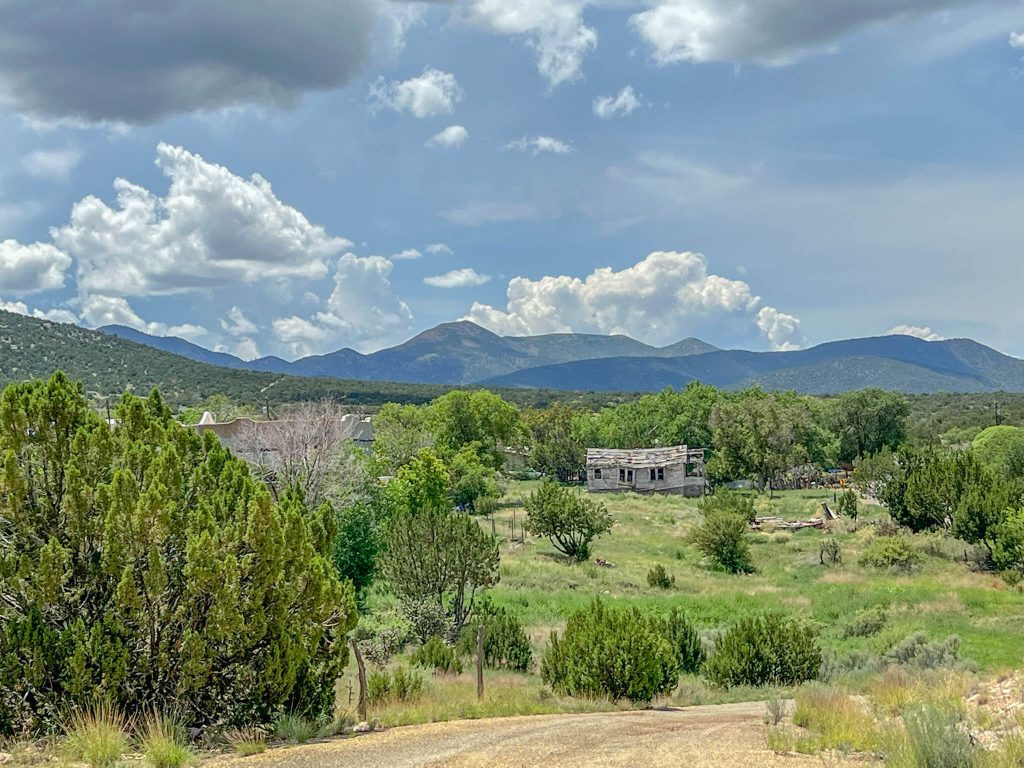
At its peak, Golden had a post office (opened in 1880), a school, the San Francisco Catholic Church (opened in 1830), and several saloons and businesses. One one business, the Golden General Merchandise Store, still operates today. Today, it’s called the Henderson General Store, named after the owner. According to the Henderson Store website, it’s been family-owned since 1918, with the following history:
“Purchased in 1918 by Ernest & Lucy Riccon, the Golden General Store served area residents with items for their daily needs. In 1962 the store was purchased by their youngest daughter, Vera, and her husband, Bill Henderson. As demand for a general store in the area declined, Vera and Bill began to trade merchandise for Southwestern Indian crafts. Sadly, Vera passed away in 2009 and Bill in 2015. Today, their daughter and son-in-law, Desiri and Allen, carry on the tradition of selling high quality Southwestern Indian jewelry, rugs, and pottery at reasonable, competitive prices.”
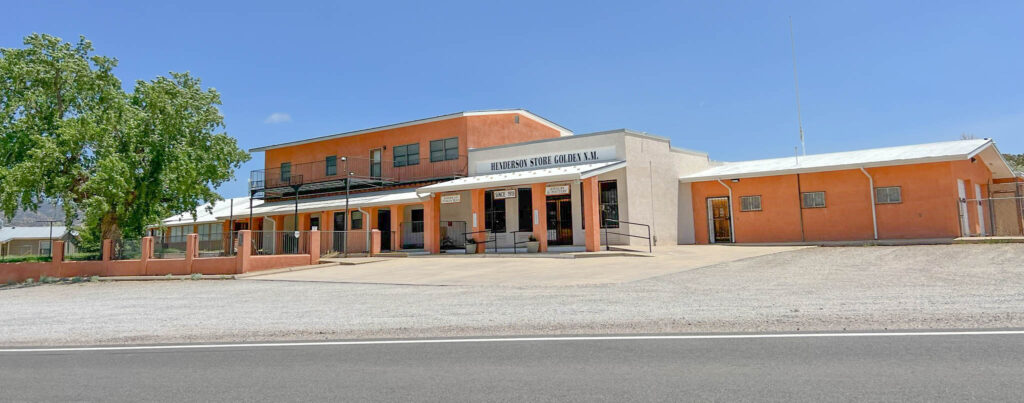
As the Henderson Store website blurb alludes to, Golden didn’t turn out to be a boom town. It was a bust. By 1928, the post office closed and Golden officially became a ghost town. However, you can still see some of the original structures in Golden, such as the most photographed building in Golden today – the San Francisco Catholic Church.
San Francisco de Asis Catholic Church
Originally established in 1839, the San Francisco de Asis Catholic Church was restored in 1960 by Fray Angelico Chavez, an historian and author of 22 books. Chavez was an interesting character and a Renaissance man of sorts. He was a Catholic priest (Franciscan) who served as a military chaplain in the Philippines in World War II. After the war, he studied at the Vatican in Rome and then at Oxford before returning to New Mexico to become a missionary at several rural villages throughout New Mexico.
Today, you can still visit the church, although it’s usually closed to the public. However, Mass is still held at the church at 4pm each Saturday.
Here are a few photos of San Francisco de Asis Catholic Church in Golden, New Mexico.
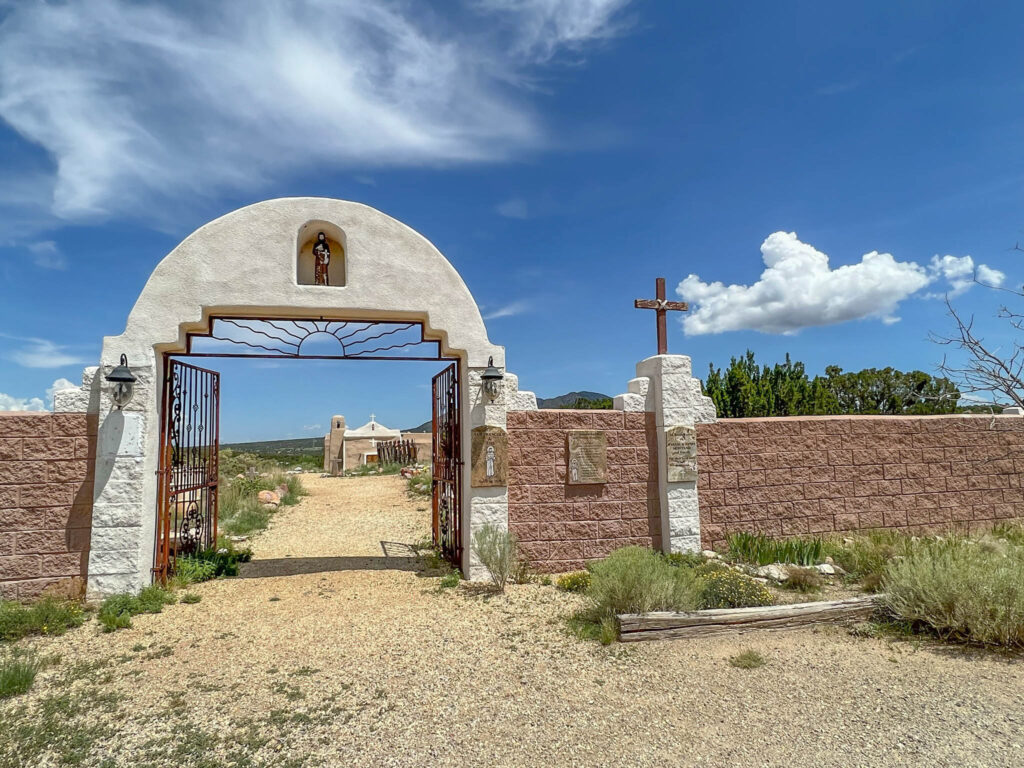
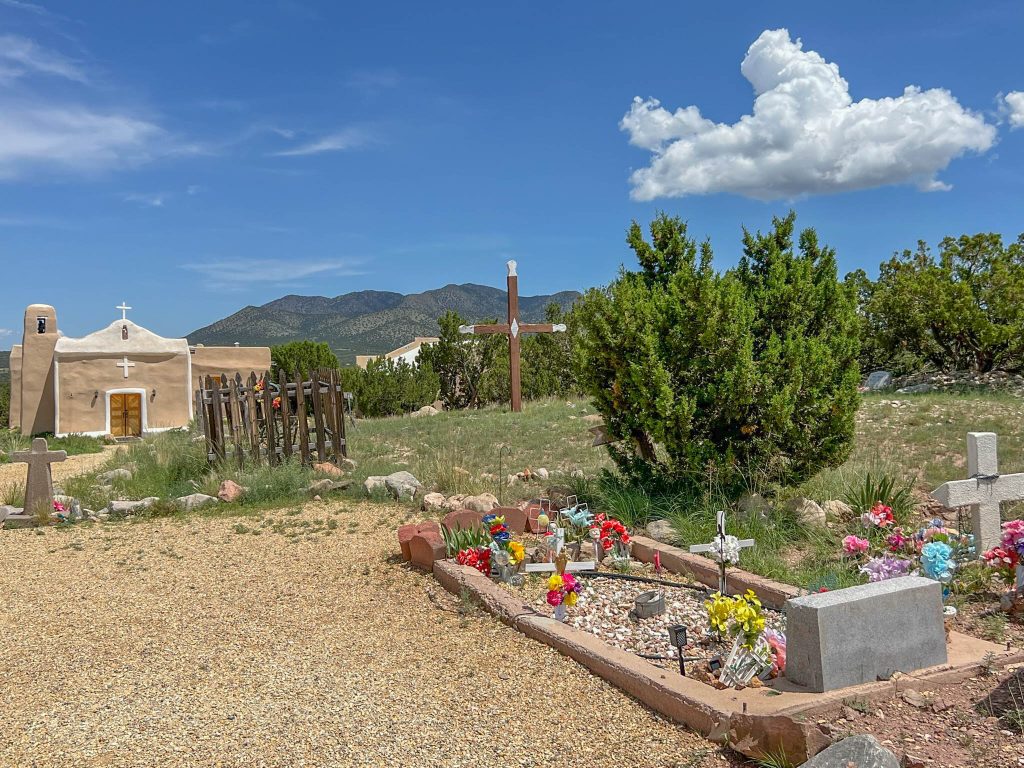
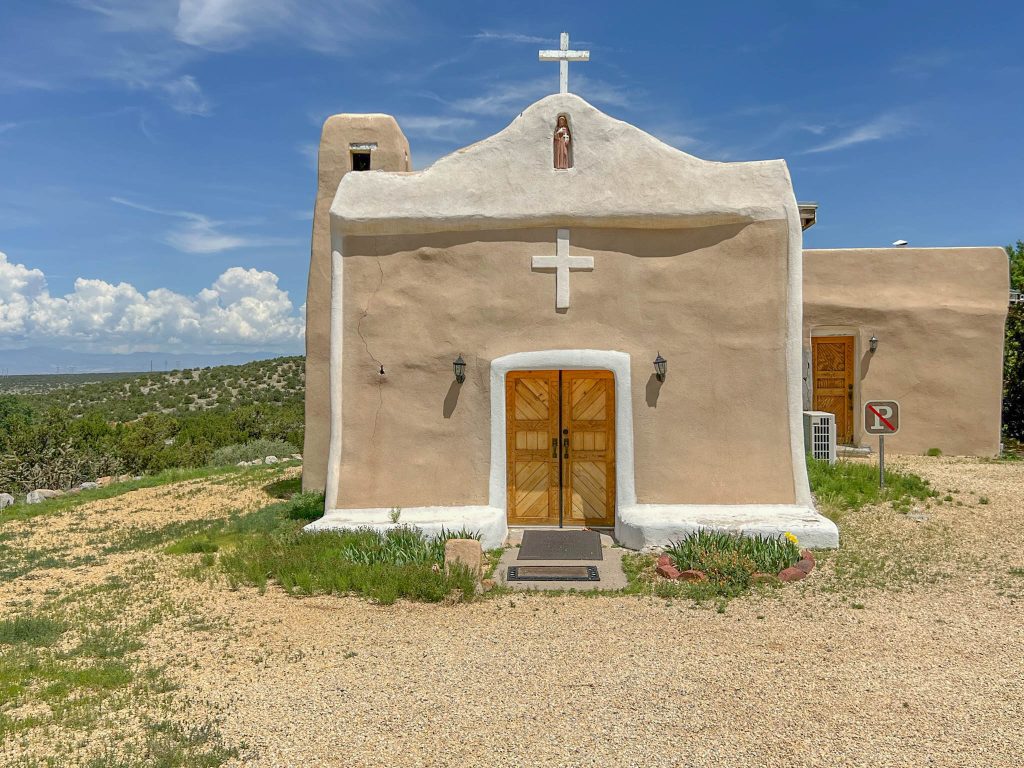
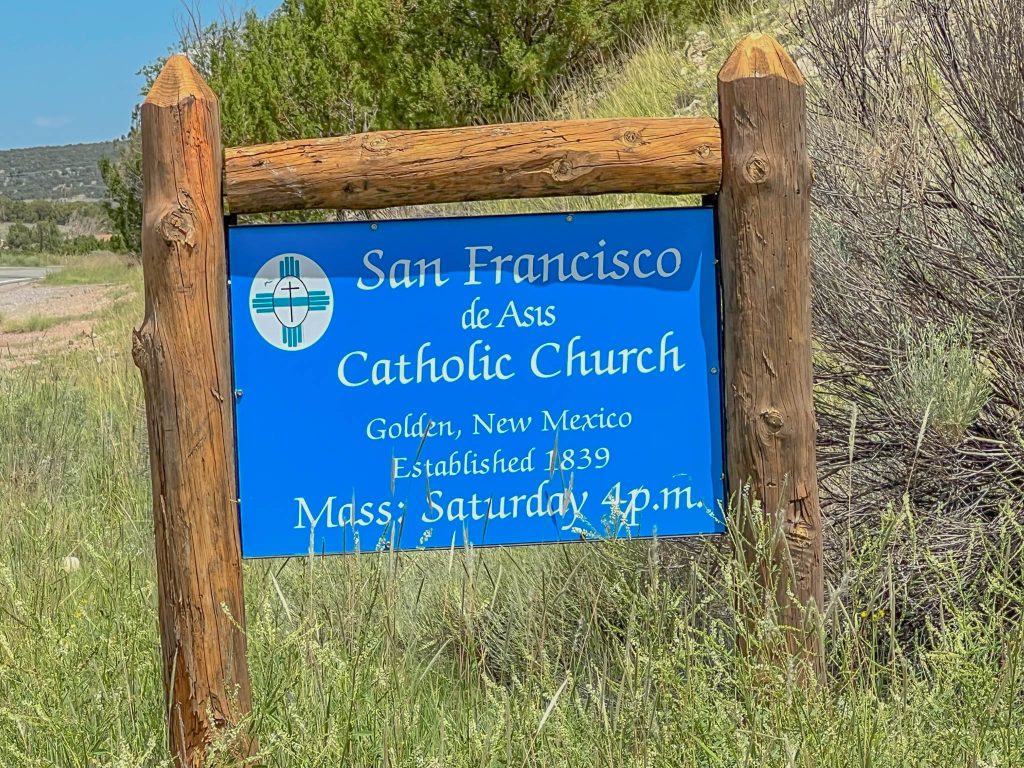
Leroy’s House
Despite all that history, a case can be made that the most well-known landmark in Golden today is Leroy’s house. People won’t know what you’re talking about if you say “Leroy’s House”. But many people will know what you’re talking about if if describe it as “the house with all the junk art in front of it”, or perhaps a more colorful variation on that theme.
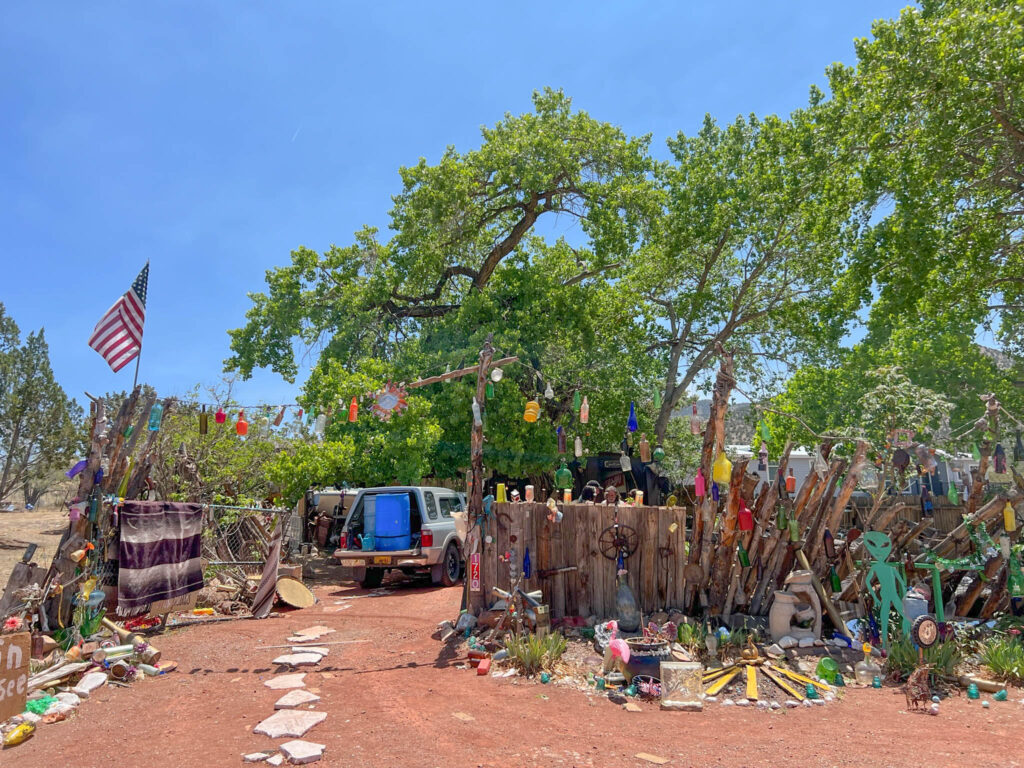
When I first met Leroy, he was just wrapping up a conversation with some visitors who departed as soon as I arrived, so I had Leroy all to myself. Leroy was very friendly, and he immediately began to give me a tour of his art. When I told him my name, he said that he had a grandson named Mark, but the family called him “Markie” when he was young. We decided to stick with “Mark” for me.
Leroy told me that his Grandparents bought the land we were standing on, and his mother grew up here. Leroy has been living in Golden since around 2000, and he began his art display around 2014. I got the feeling that extra emphasis should be placed on the word “around” so don’t hold me to those dates. His collection originally began as a display of bottles, and he continued to build on it over the years.
Today, his art gallery includes a “cantina” and a “mine shaft”, pictured below.
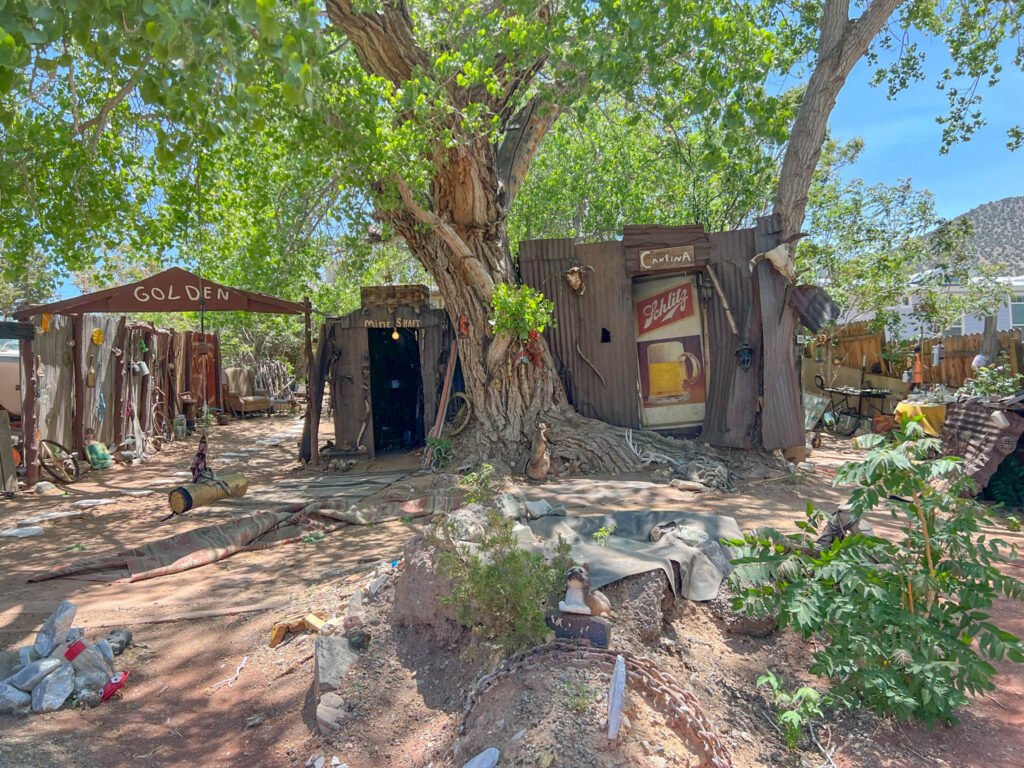
So, what’s inside the Cantina and Mine Shaft? Glad you asked! Here are some photos.
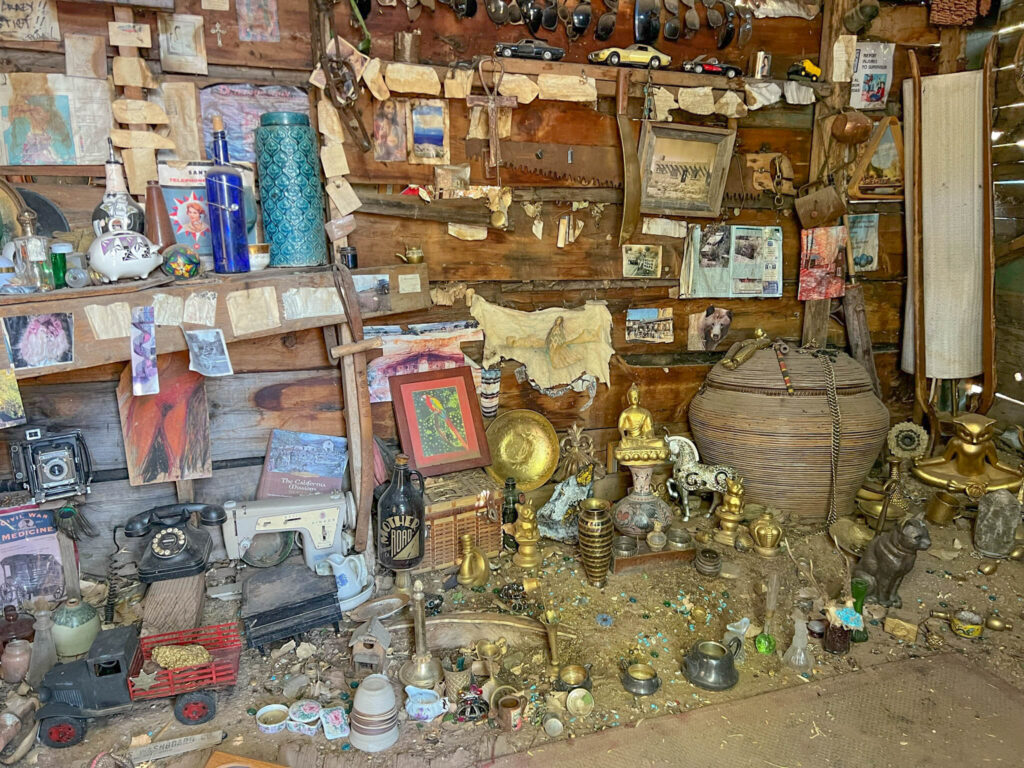
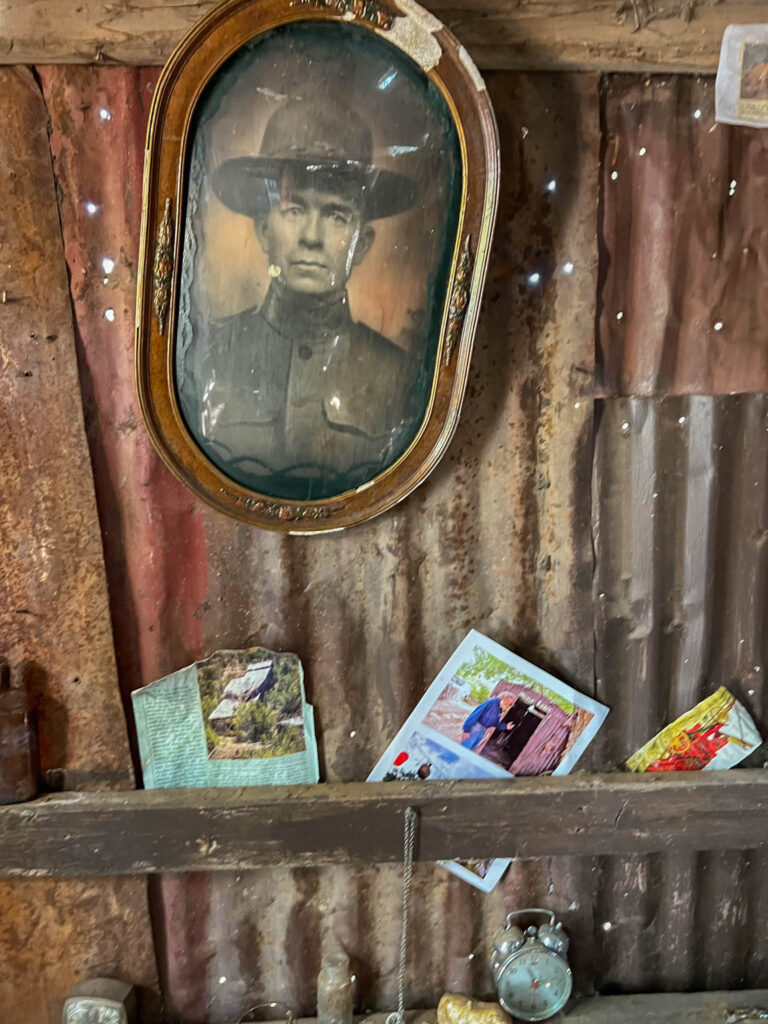
Leroy also has a “Gold Mine” on his property. He told me that the mine goes all the way to the Ortiz mountains. But then he smiled and clarified that it COULD go to the Ortiz Mountains. He left out the “with a whole lot of digging” part of that sentence. It was pretty obvious, so nothing more needed to be said. We shared a laugh while glancing at the mirrors at the back of the Gold Mine that give the false impression of distance.
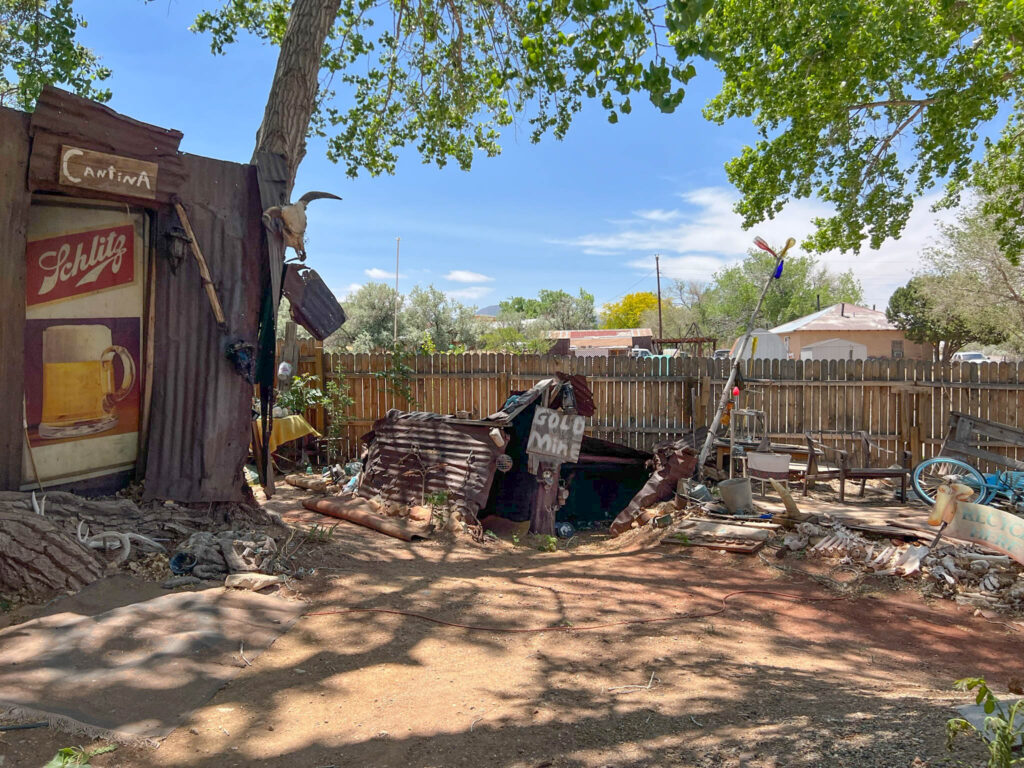
Finally, Leroy’s property has plenty of outdoor exhibits. Here are a few examples:
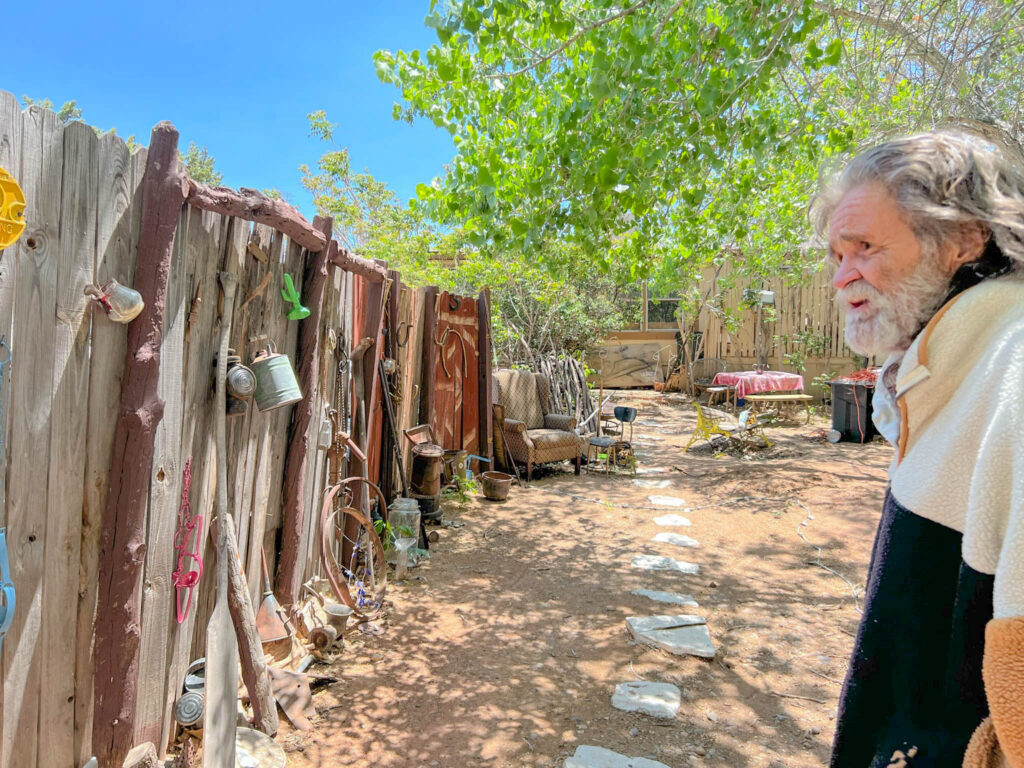
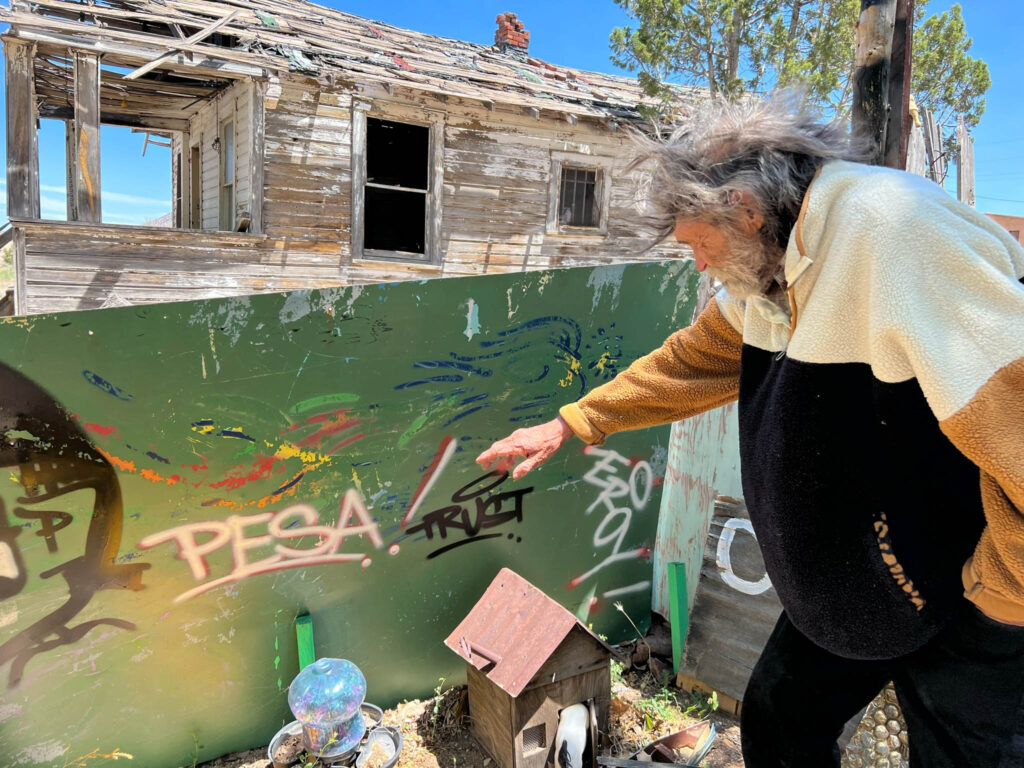
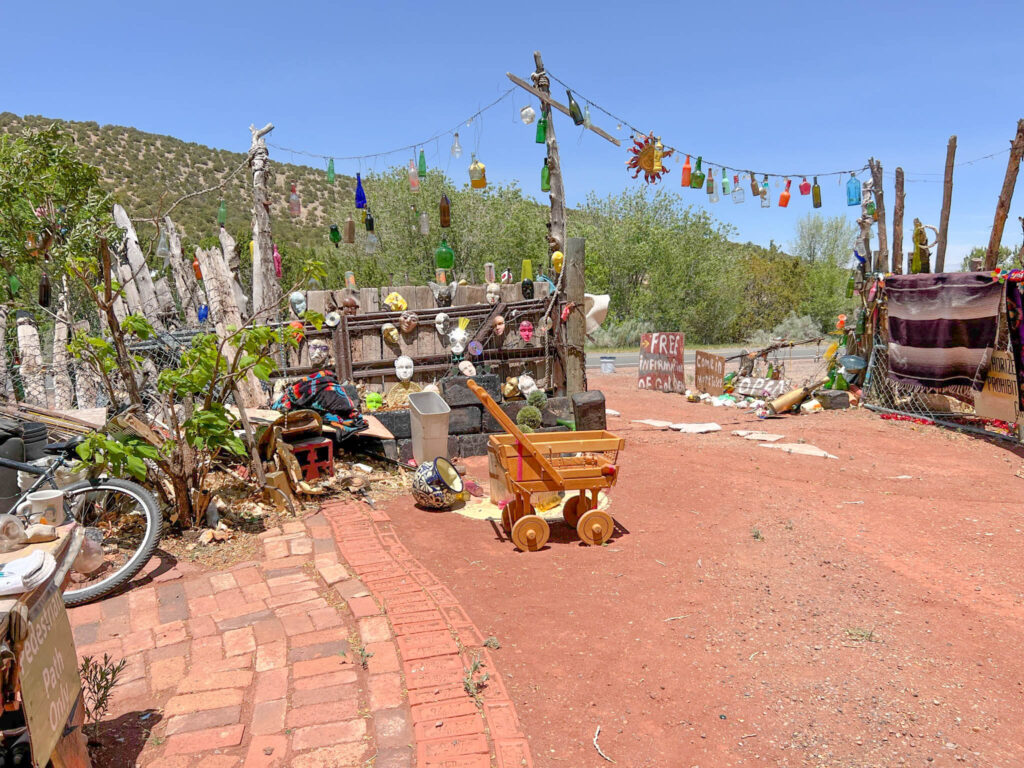
There are other things I could share about his Leroy’s art gallery but I don’t want to spoil all of it, so I’ll leave it at that.
A Photo with the Mayor
Before leaving, I asked Leroy if he’d be willing to take a photo with me. He said “of course, take a photo of anything you like.” So, I proceeded to balance my phone on a cluttered table, set the timer, and quickly hopped over to position myself next to Leroy. Leroy was ready with his mayoral pose. The next thing we knew, a tarantula hawk wasp decided to fly right in front of us, just in time for the photo!
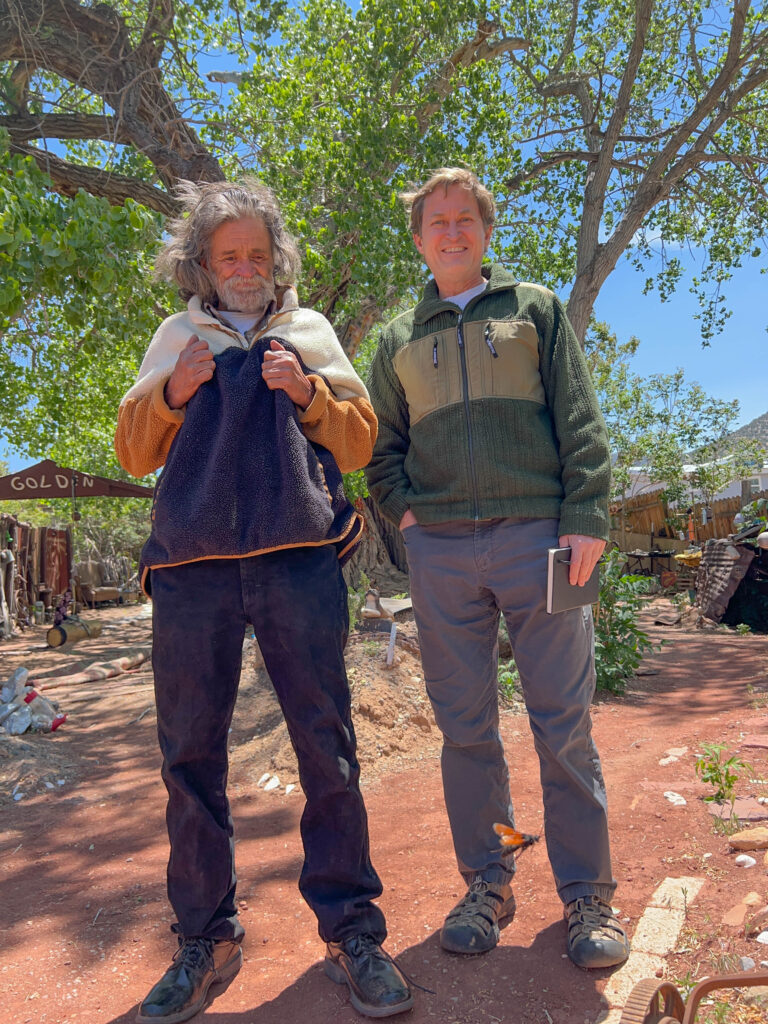
Everything you didn’t want to know about Tarantula Hawk Wasps
Well, it’s time for a tangent. For those of you who aren’t familiar with tarantula hawk wasps, they are amazing insects that deserve your attention, particularly due to bullet #4 below:
1) Fun fact – they are the State insect of New Mexico. Another fun fact, our state bird, the roadrunner, is one of the few animals that will attempt to eat our state insect.
2) Tarantula spiders are not big fans of tarantula hawk wasps. This is understandable, given that female wasps sting tarantula spiders, drag the paralyzed spider to a burrow, and lay a single egg on the spider’s abdomen. You know where this going. Once the larva hatches, it burrows into the spider’s abdomen and feeds on the spider, careful to avoid vital organs to keep the spider alive as long as possible. After several weeks, the larva enters a pupal stage. Once it has transformed into an adult, the adult leaves the spider’s abdomen and starts the cycle all over again. That surely must be the stuff of tarantula spider nightmares.
3) Tarantula hawk wasps feed on sugar-rich nectar produced by flowers, and they are not aggressive. However, they may defend their burrow if they feel threatened.
4) You do not want a female tarantula hawk wasp to feel threatened by you (only the females sting). After all, they are #2 on the infamous Schmidt sting pain index.
The Schmidt Pain Index
For those not familiar with the Schmidt pain index, let me explain. Justin Schmidt was a scientist (entomologist) at the University of Arizona. Sadly, he passed away in February 2023 from complications of Parkinson’s disease at the age of 75.
Schmidt was the author of the book “The Sting of the Wild“, where he shares stories about his journey to document the relative pain experienced after being deliberately stung by over 80 species of insects. It’s a fun book to read. This led to the creation of his famous (well, at least among wildlife nerds like me) Schmidt Sting Pain Index. His index includes a quantitative rating, along with humorous descriptions of the pain he experienced after being stung by each insect.
The most painful insect sting of all is the bullet ant, described as “Pure, intense, brilliant pain. Like walking over flaming charcoal with a 3-inch nail embedded in your heel.”
Here’s a picture of a bullet ant on a leaf that my son and I came across during a trip to the Peruvian Amazon. Needless to say, this is as close as we wanted to get to the bullet ant.
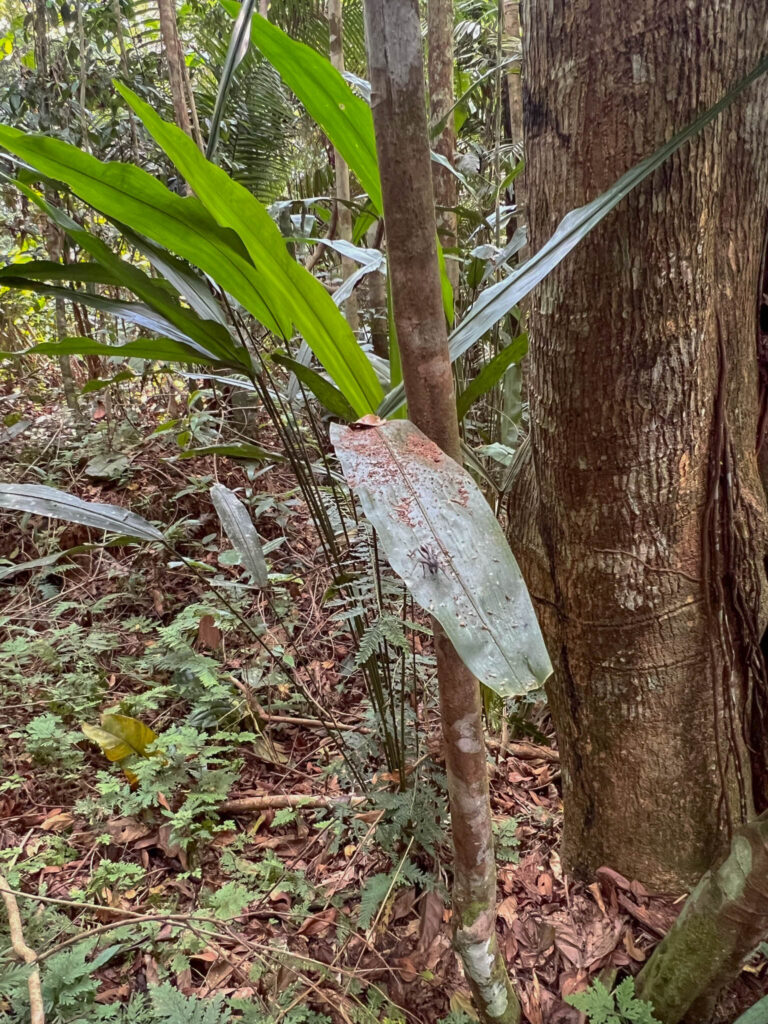
The tarantula hawk wasp came in second place on Schmidt’s Sting Pain Index. Schmidt described a tarantula hawk wasp sting as “Blinding, fierce, shockingly electric. A running hair dryer has been dropped into your bubble bath. A bolt out of the heavens. Lie down and scream.”
Luckily, the wasp wasn’t interested in us during our photo at Leroy’s place, so no screaming was required.
Parting Thoughts from Leroy
Before I left, I asked Leroy what he likes most about living in Golden. His answer, “all of this” as he used his arms to encompass his home and art. I then asked him to share one thing that he would like to see improved about Golden. His answer, “the neighborhood attitude”, adding that many people don’t understand him and his art. He estimated that there are about 14 people living in Golden, although some websites put that number at closer to 37. Let’s just agree to say, “not many” people live in Golden today.
On my way out, Leroy asked me to sign his guestbook, strategically placed next to a tip jar. I wrote a quick note and gave him a tip. Leroy then gave an Elvis Presley imitation while saying, “thank you, thank you very much.”
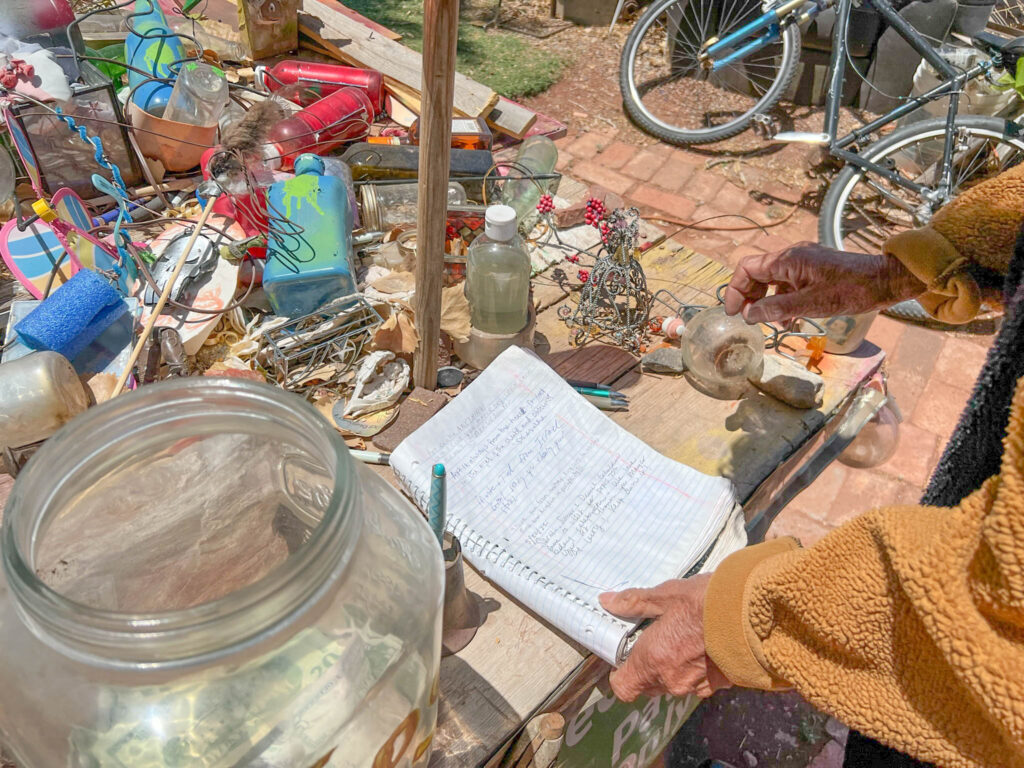
As we parted ways, Leroy said that the highlight of his day is to find something in his mailbox other than bills, and he encouraged me to send him something via snail mail. Leroy doesn’t have email, so he gave me his business card and encouraged me to pass it along, so here it is!
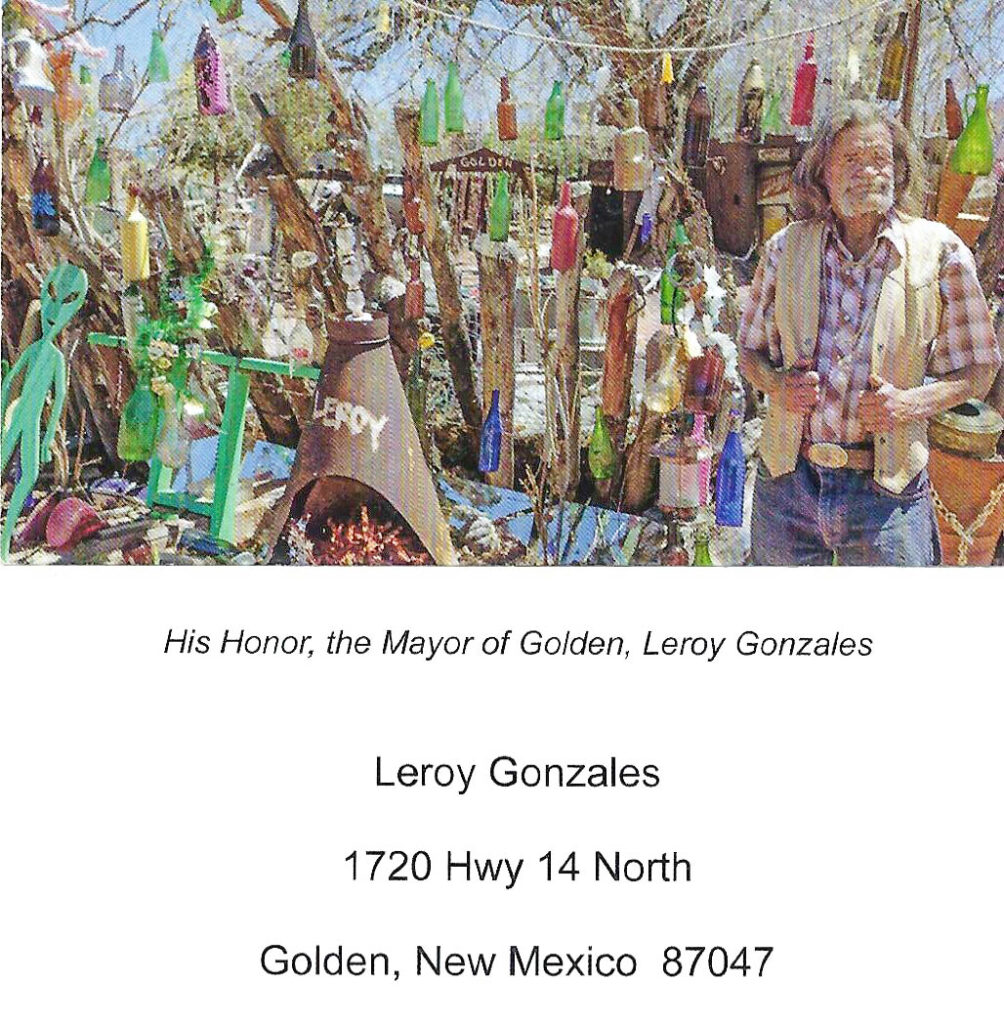
Since Leroy was the highlight of my day today, I stopped by his place a few weeks later to give him a framed copy of our photo together with the tarantula hawk wasp photobomber. Perhaps you’ll see it in his collection when you visit the Mayor of Golden, New Mexico.
Thought for the Week
In a nod to Leroy’s art, here’s an interesting quote from Pablo Picasso on the purpose of art.
“The purpose of art is washing the dust of daily life off our souls.”
— Pablo Picasso
Thanks for reading and happy travels!
Mark (The New Mexico Travel Guy)

Mark Aspelin, The New Mexico Travel Guy (www.newmexicotravelguy.com), is a travel writer and author of two books who has enjoyed a wide variety of adventures in his travels to over 100 countries and all 50 U.S. States. His current project involves visiting EVERY town in his home state of New Mexico (there are 582 towns on his list) and writing a story about each one. He’s on track to finish the project by his early-mid 100s. When not traveling, Mark lives as a recluse in the mountains outside of Albuquerque, New Mexico.
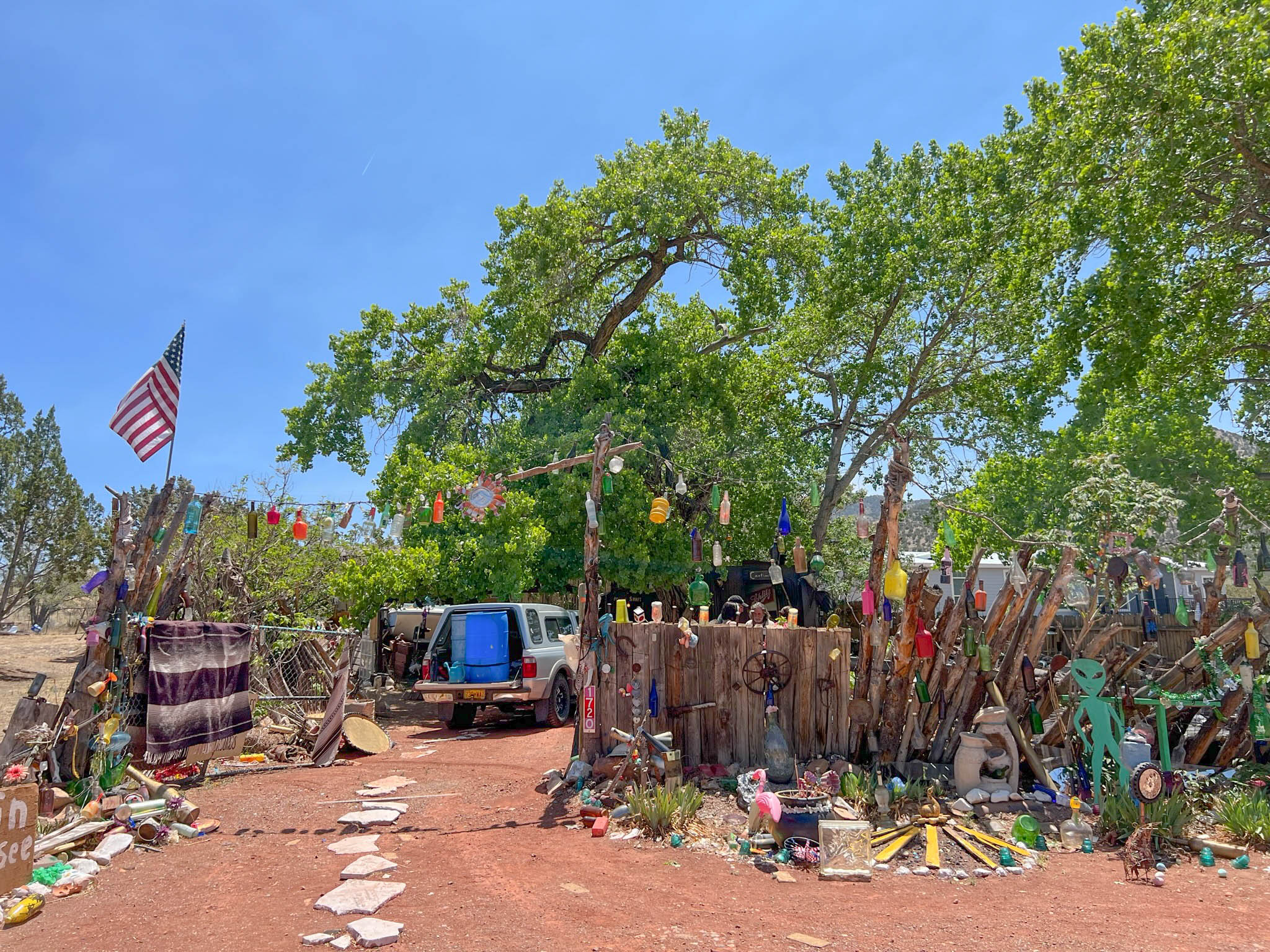

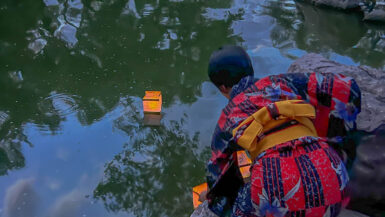
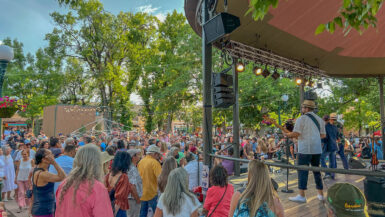
Leave a reply